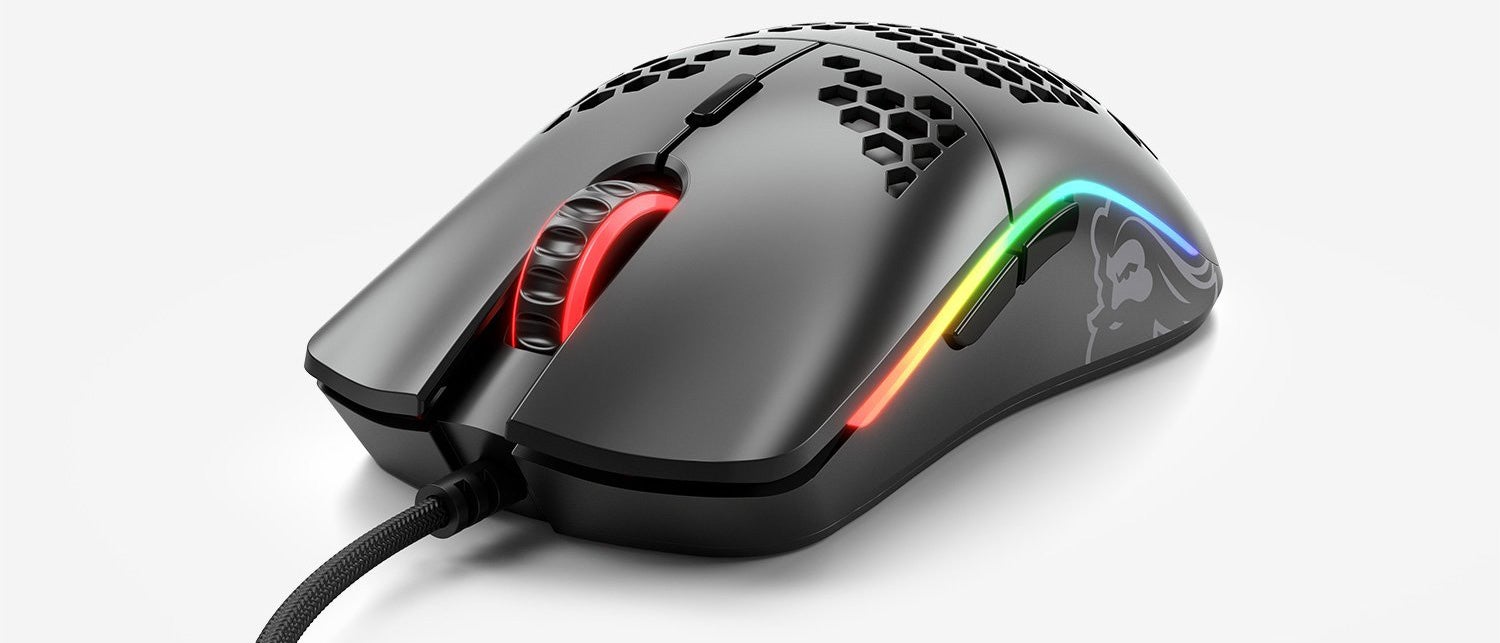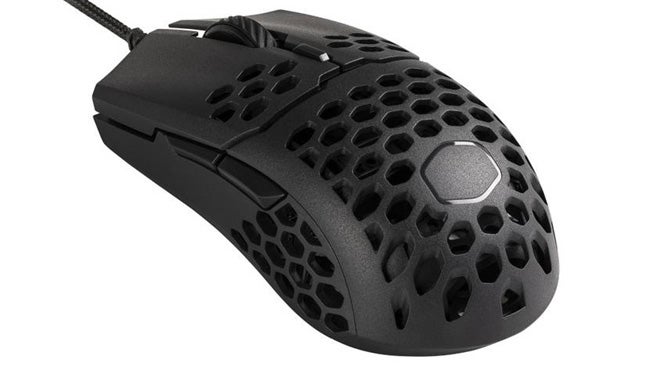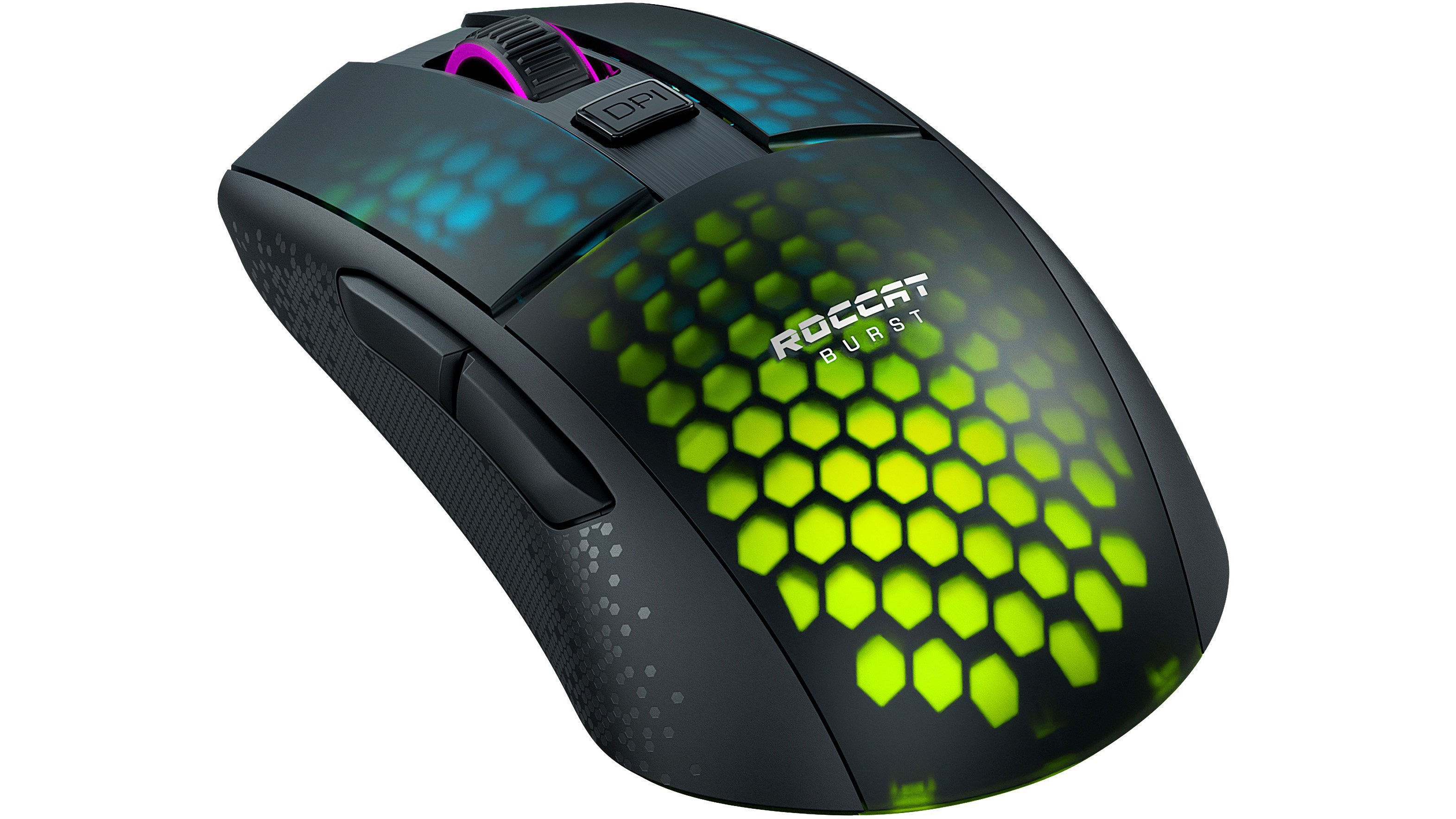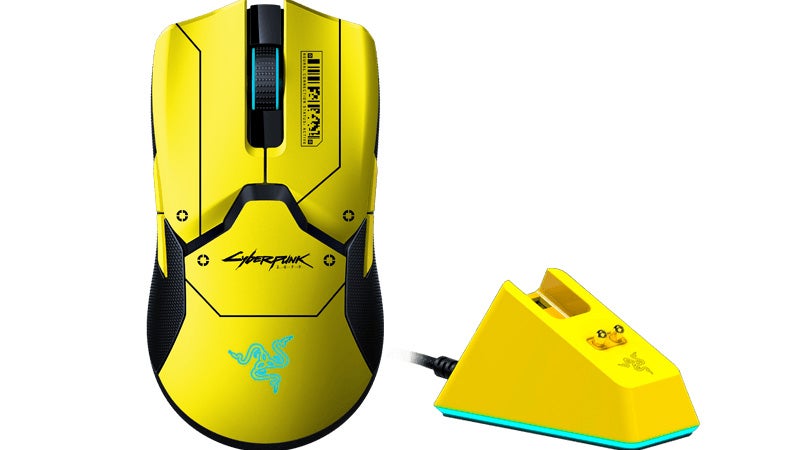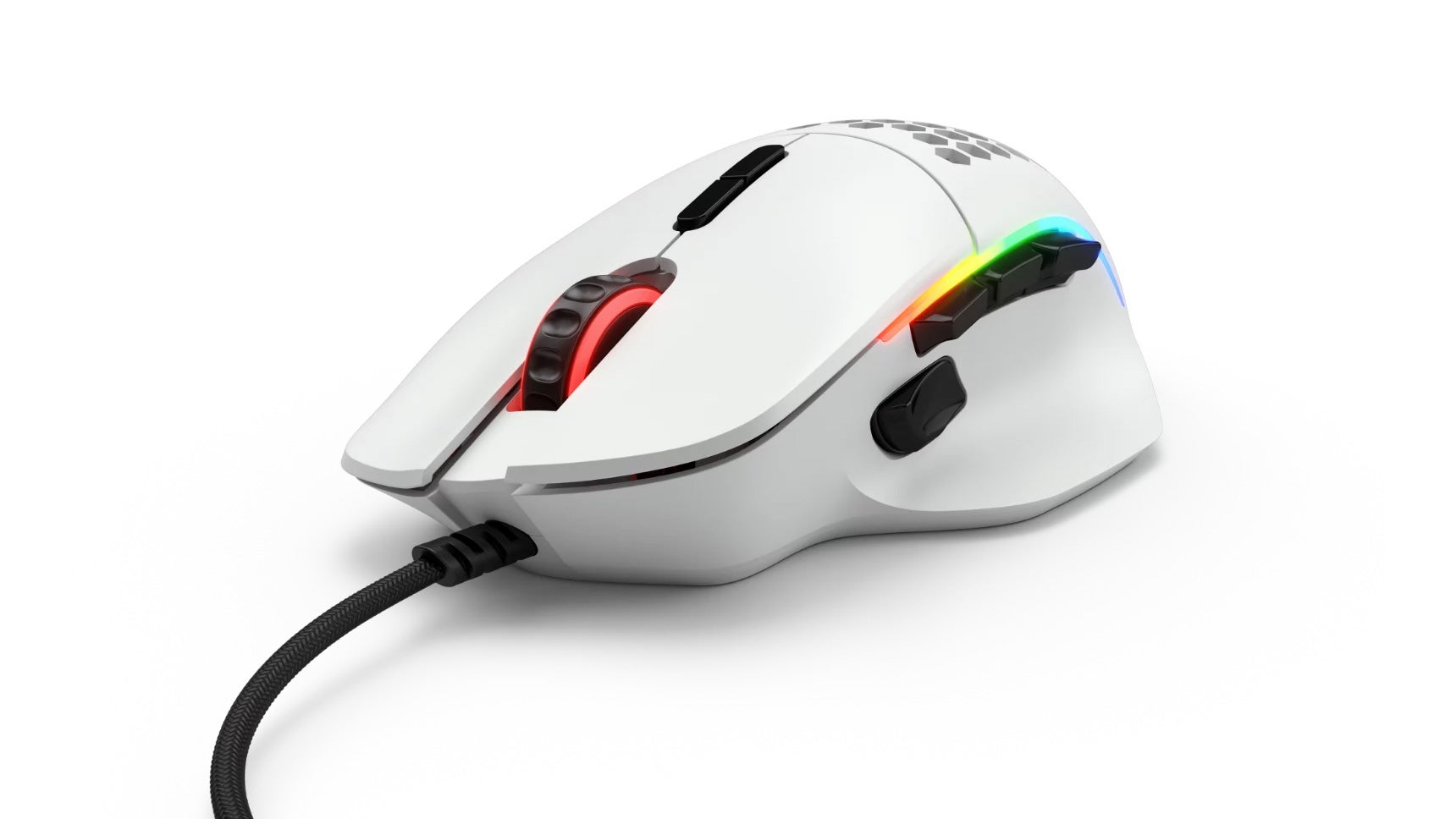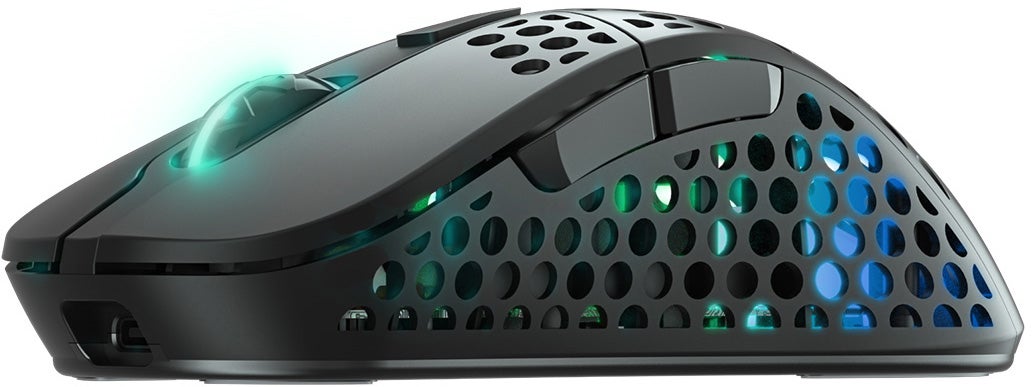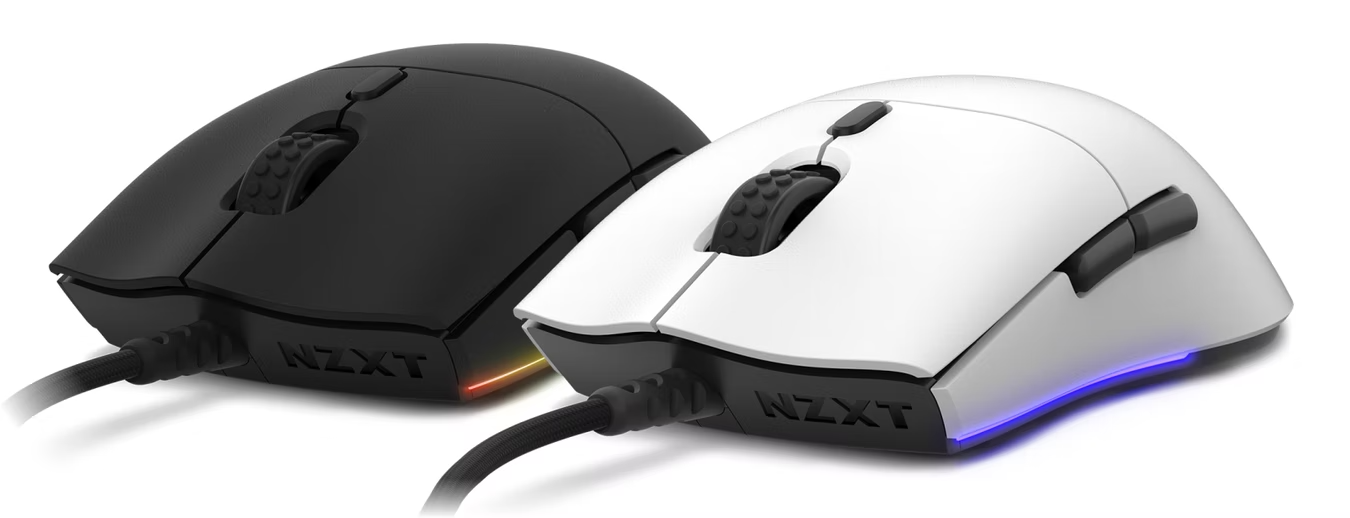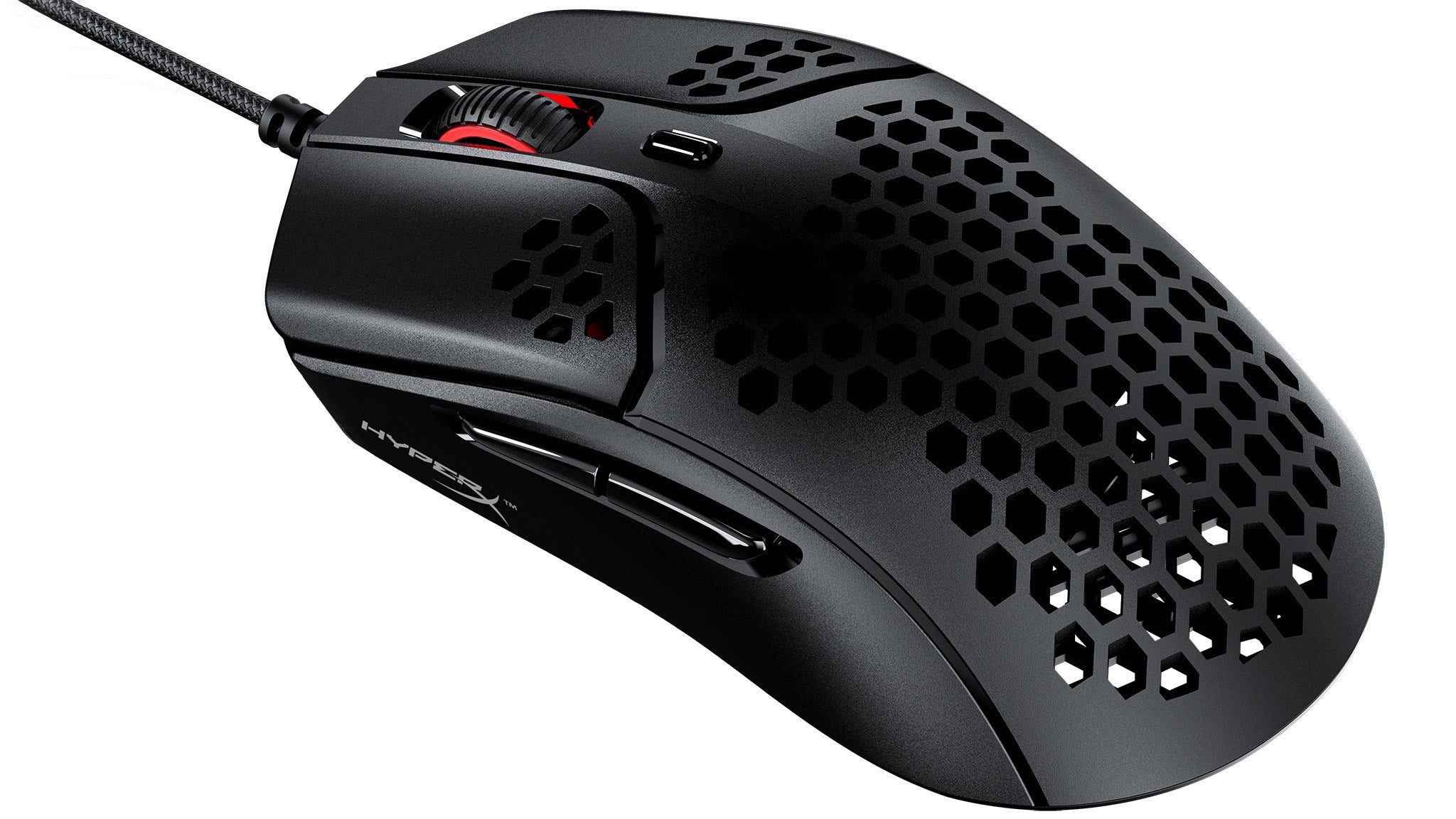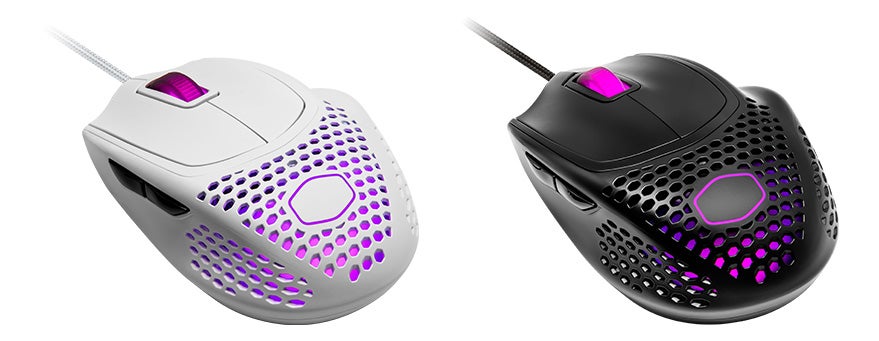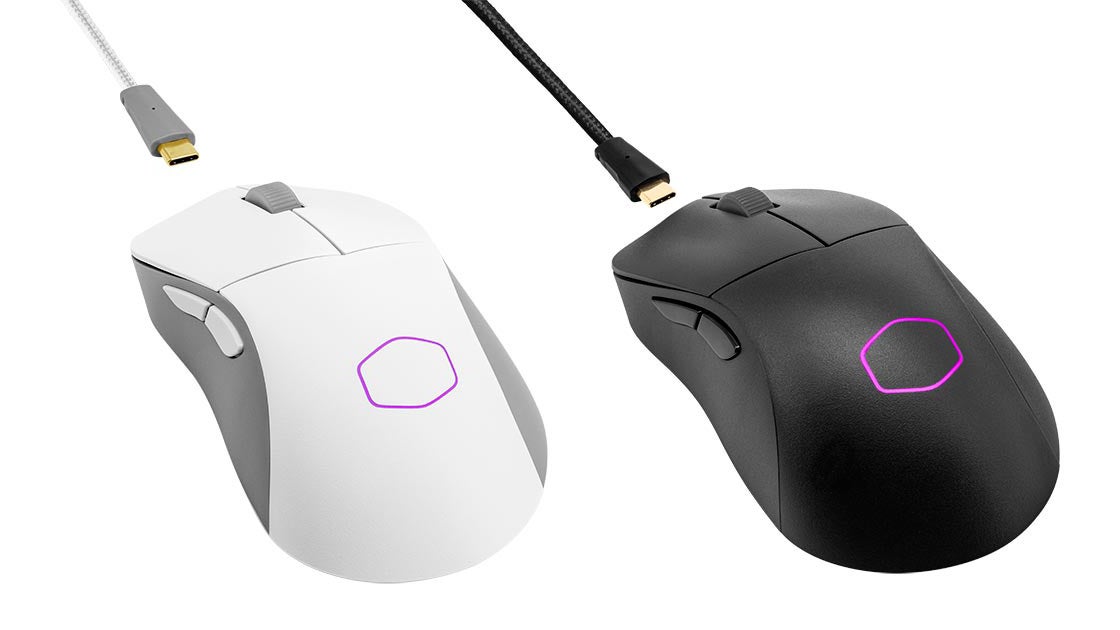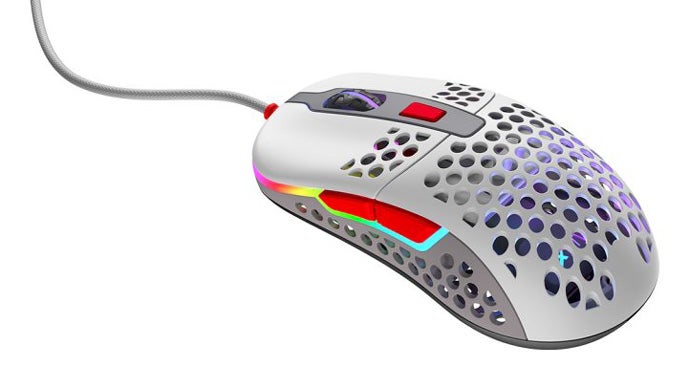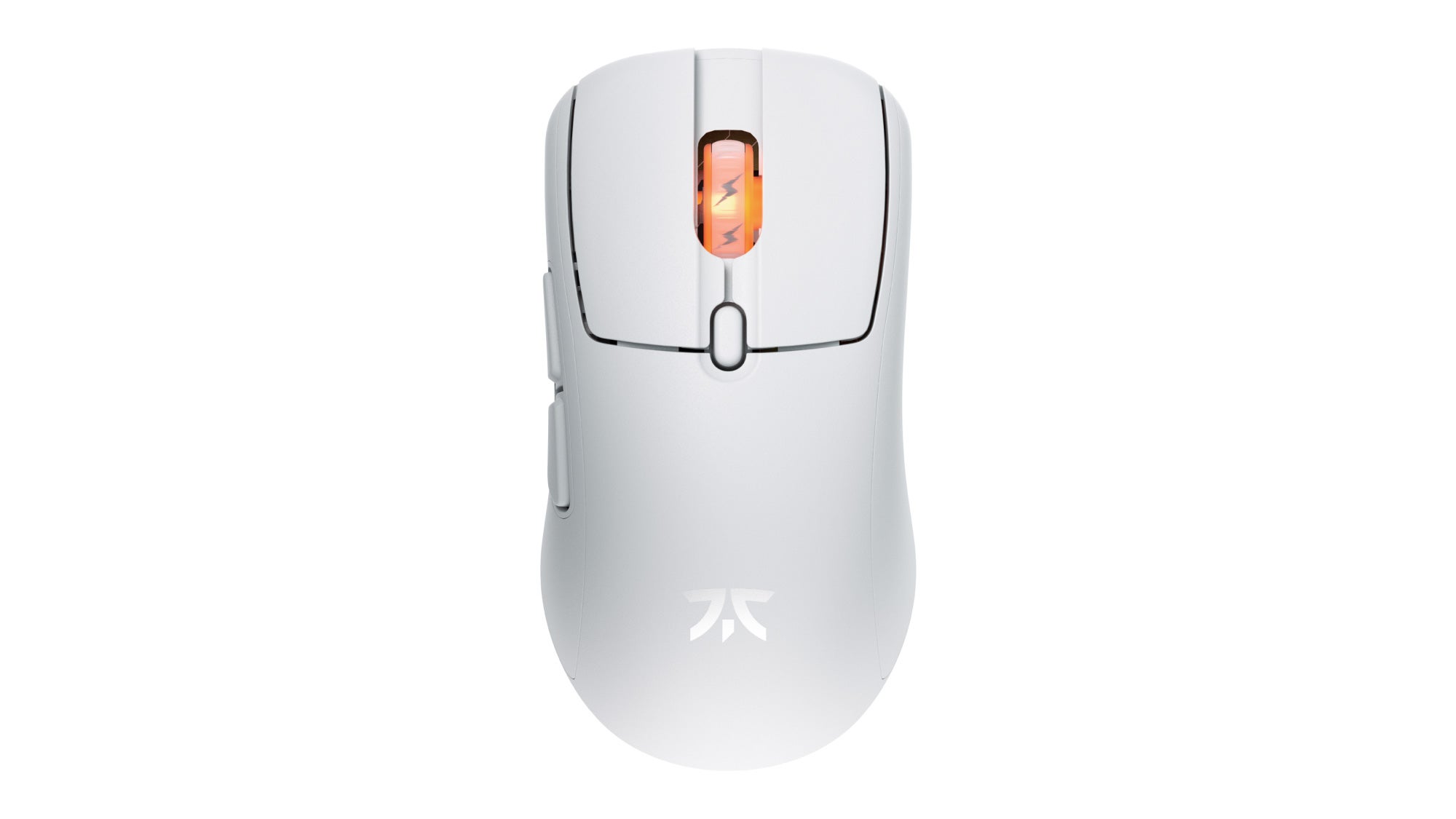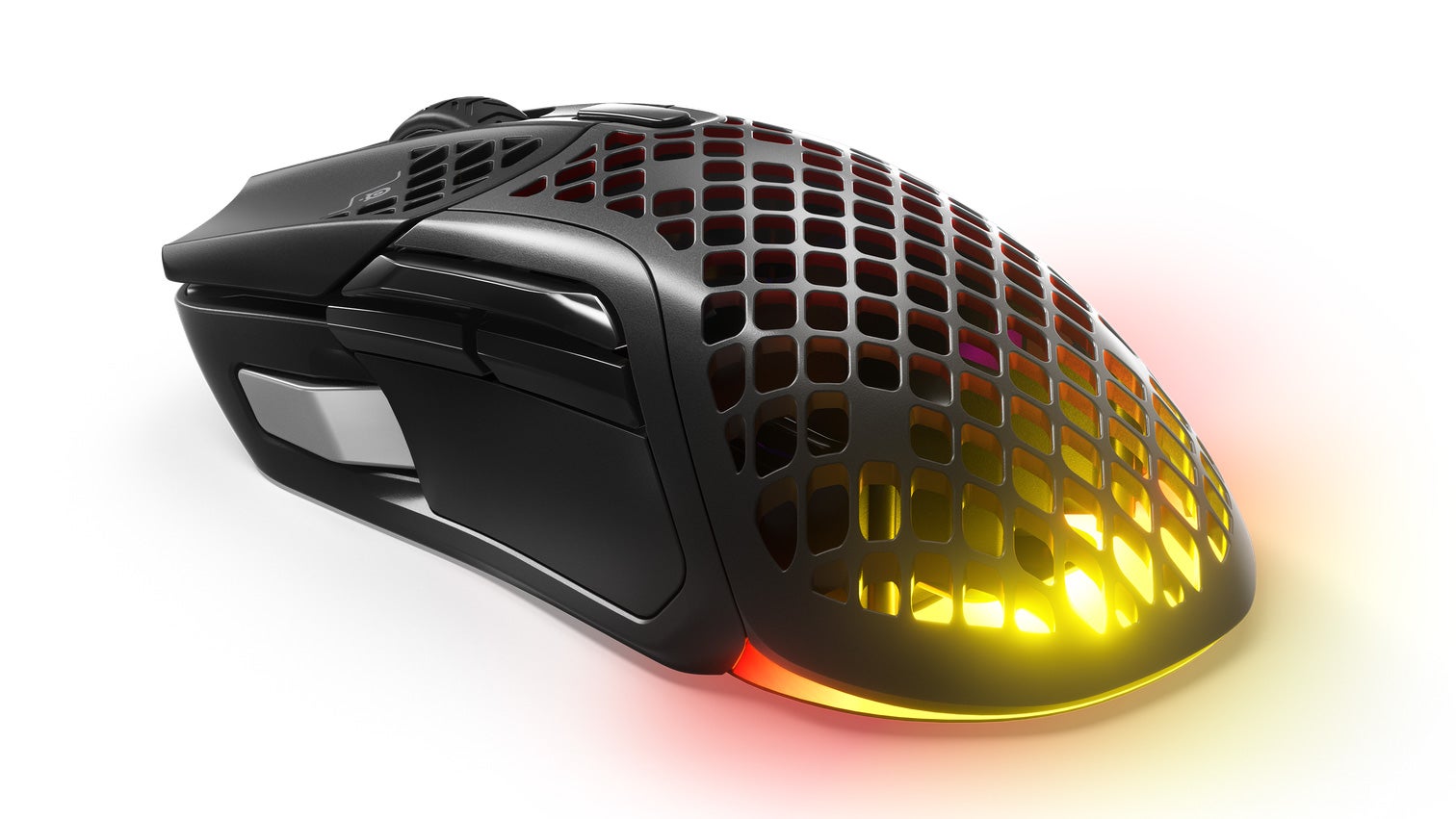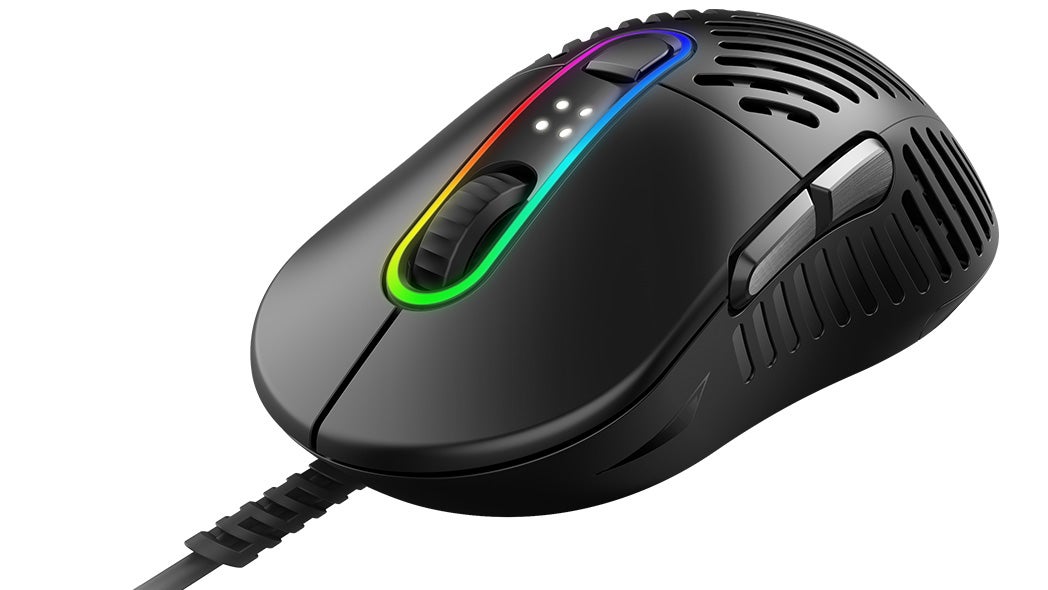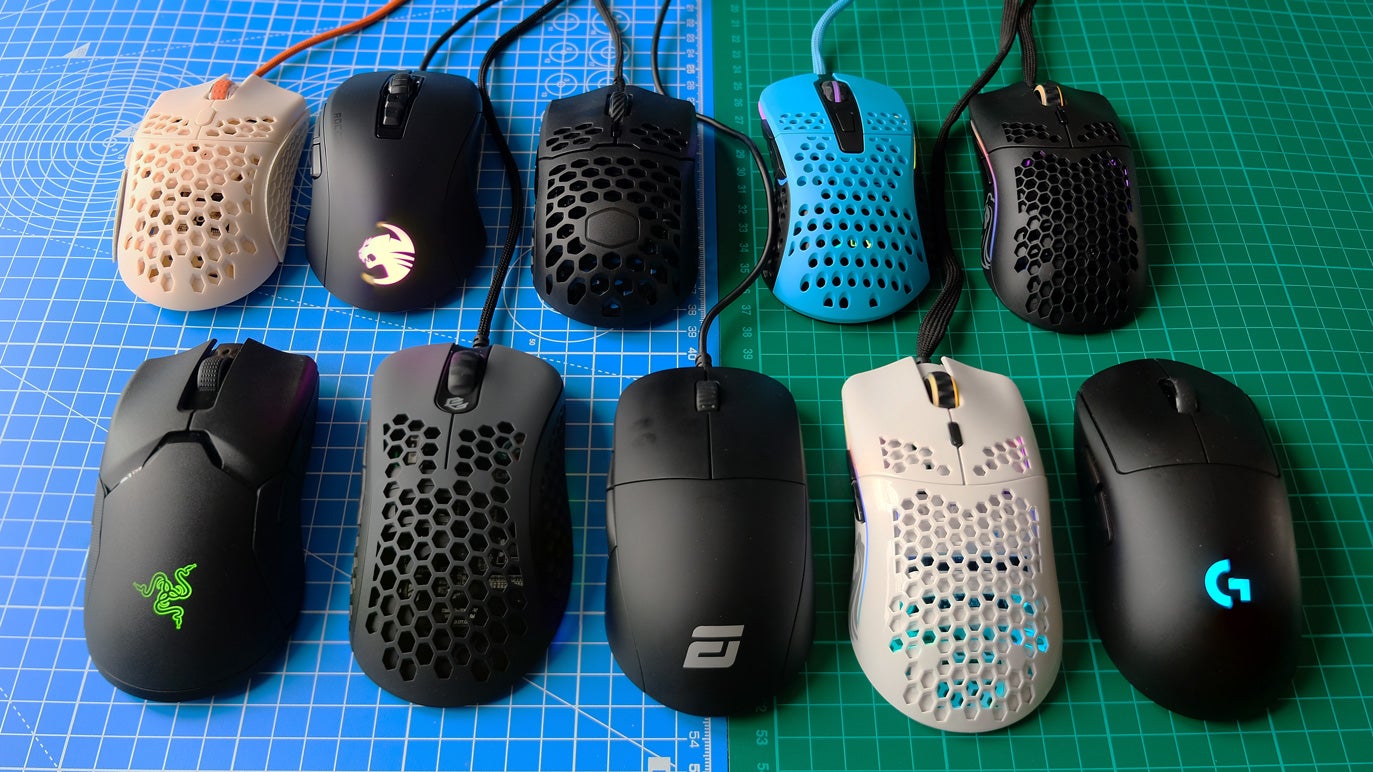Note: for the purposes of this article, we consider an ultra-light mouse as any mouse that weighs 80 grams or below - although the lightest mice often weigh considerably less. Both honeycomb and traditional body gaming mice are eligible for inclusion. For comparison’s sake, most standard mice weigh at least 100 grams; the popular Logitech G502 weighs over 120 grams. For more on ultra-light gaming mice, check out our article on why ultra-light honeycomb mice are the next big thing in PC gaming gear. We also have some frequently asked questions at the end of the article and a table of the most important specs. And if ultra-light isn’t for you yet, check out our full list of contenders for the title of best gaming mouse 2021. Without further ado, here are the best ultra-light gaming mice on the market: The (£45/$50) Glorious Model O remains our pick for the best gaming mouse on the market, thanks to a clever design that combines a range of modern trends: a weight-saving honeycomb design, an extremely flexible “shoelace” cable, a modern PMW 3360 optical sensor and RGB lighting. It also ranks highly as it’s an extremely affordable ultra-light. The Model O is an excellent ultra-light for gamers with medium to large hands. The same design is also available in a smaller size as the (£39/$50) Glorious Model O-, a great choice for smaller hands or those looking for even lower weights (58g for the Minus versus 67g for the vanilla Model O). The Model O Wireless (£80/$80) is also available, which costs significantly more than the wired model and is a bit heavier at 69g, but offers a more comfortable gaming experience. Glorious’ wireless tech isn’t quite as developed as that of Logitech, with higher click latency, but it’s not something you’ll notice outside of laboratory testing or esports tournaments. A smaller Model O- Wireless also exists for those with smaller hands. The (£30/$18) Cooler Master MM710 is another strong option, with a unique stubby design and the lightest weight on a widely available mouse - the Finalmouse Ultralight 2 is lighter, but was only on sale for a limited time. The tall hump at the rear of the MM710 makes it a clever choice for claw grip players, fitting naturally into the bottom of the palm to provide extra comfort and control that isn’t possible with a flatter mouse. The MM710 doesn’t include RGB lighting of any kind, a rare choice in 2022 that does allow for small savings in weight and cost. The short but wide dimensions make this a great selection for gamers with almost any hand size. The MM711 is a slightly heavier and more expensive version of the MM710 that adds RGB lighting and is available in multiple colours and coatings. We found it offered the same excellent performance as the MM710, with the extra 10 grams bringing it closer in weight to other ultra-light options. If RGB lighting is essential, the MM711 is a premium mouse worth considering. The (£25/$23) Razer Viper Mini is a stellar performer at its price point, packing a PixArt 3359 optical sensor, low latency optical switches and RGB lighting into a traditional (no-hole) design of just 60 grams. The feel of this mouse is superb for small and medium hands in fingertip or claw holds, while smaller hands can also palm the mouse easily. The soft cable is another strong point, although it’s not quite as flexible as that offered by the likes of Glorious. The Viper Mini is an excellent value ultra-light mouse. Logitech kicked off the trend for wireless ultra-light mice with the release of the 80 gram G Pro Wireless, combining an efficient optical sensor with a small, safe shape and a fast-as-wired connection. The (£109/$125) Logitech G Pro X Superlight is a further evolution of the same concept, with the same core components but a kerb weight of only 63 grams. To achieve that, Logitech has cut out features like movable side buttons and RGB lighting, leaving only the bare essentials - including the solid, well-constructed feel of the original mouse. The design is a triumph, no doubt, even at the current asking price of around £109/$129. There are certainly better value wireless mice on the market, including the original G Pro Wireless, but in terms of out-and-out performance the Superlight absolutely delivers. We’ve ranked it just behind the Razer Viper Ultimate, another high-end wireless ultralight mouse, due to the Razer’s lower asking price, but either one could be a great choice depending on your preferences for shape, sensor and software. The Superlight is also available in three colours - black, white and a fetching pink. The (£84/$85) Burst Pro Air and (£35/$40) Burst Pro are solid evolutions beyond Roccat’s first ultra-light mouse, the Kone Pure Ultra. It uses an ambidextrous design this time, like the Roccat Kiro, making it suitable for left or right-handed use, unlike the Pure Ultra which was an ergonomic right-handed design. The first thing you’re likely to notice when plugging this mouse in is this cool subsurface honeycomb design, which is revealed by RGB lighting below. This prevents dust or moisture ingress, a worry for some potential ultra-light purchasers, while still cutting weight and showing off that cool hexagonal pattern. The specs here are top notch, including a soft and flexible cable, Pixart 3370 (wired) or 3389 (wireless) optical sensors and Roccat’s own Titan optical switches - which we loved in their Vulcan mechanical keyboards. The combination works well in game, and the weight of 81g for wireless and 68g for wired is respectably low. If you like the design - and we do quite a bit - this is a strong choice, especially at its attractively low price point for the wired model. The wireless model is more pleasant to use, with convenient (if slightly too frequent) USB-C charging to top up the battery. The (£80/$100) Logitech G303 Shroud Edition is an ultra-light evolution of the old diamond-shaped G303 Daedalus Apex wired mouse, adding Lightspeed wireless connectivity, a more prominent hump and the company’s 25,000 DPI Hero sensor. The result is an unusual high-performance mouse perfectly suited for claw grip (for medium hand sizes) or fingertip grip (for large hand sizes). There are a few nice design touches here, with a pull-out tray below the Logitech G logo that reveals a resting place for the USB dongle, semi-transparent sides and extremely large mouse skates. Like the Xtrfy MZ1, it’s clear to see the vision of a single creator here, and the result is another uniquely-shaped mouse that will be incredible for some people and intolerable for others. While the earlier mice on this list boast more universal appeal, the G303 Shroud Edition is a fantastic performer with some truly unique ideas - definitely worth a look. The (£60/$80) Razer Viper Ultimate is a surprisingly light wireless mouse, given its long 70 hour battery life and non-ventilated design with RGB lighting. The mouse uses optical mouse switches, previously used in Razer’s opto-mechanical keyboards, removing the need for a de-bounce delay and therefore speeding up clicks by a few milliseconds. The Focus+ sensor is also intriguing, promising improved responsiveness through syncing the sensor’s reporting to the computer’s polling rate. Behind all of this technobabble though, there’s a very performant gaming mouse with a comfortable shape and top sensor, coming in at price only exceeded by that of the new Logitech G Pro X Superlight. There’s also a gorgeous Cyberpunk 2077 edition (pictured above), that swaps out the regular model’s black and green styling for a lovely yellow - at a £10 premium, I’d say it’s well worth it if you like your mice to really stand out! There is also a wired version, the standard Viper, which costs significantly less and weighs in at an even lighter 69g. This wired model is also available as the Viper 8K, which reduces response time by whacking the USB polling rate from 1000Hz to 8000Hz. The ($60/£60) Glorious Model I is a superb mouse in the same comfy, high-button count vein as the popular Logitech G502 Hero and Razer Basilisk V3. The difference, of course, is the ultra-light design, flexible cable and high-grade mouse skates. You can also pop off the side buttons to replace them with ones of a different shape, or flat panels if you don’t need them and just want a smooth surface to grip. These characteristics make the Model I a much better choice for FPS gaming, without sacrificing the comfort that made these heavier mice so strong. The only thing it’s really lacking from these alternatives is a fancy scroll wheel; the Model I’s is serviceable but doesn’t offer an ‘infinite scroll’ mode if that’s important to you. It doesn’t to me, and I’m glad to see some proper competition in this popular space. Alternatively, have a look at the (£100/$109) SteelSeries Aerox 9 Wireless, which is another strong option at 89g with 18 buttons, 12 of which are in a grid on the side grip. This is a heavier mouse, but more suitable for MMOs and players that require a high button count. The (£79/$89) Xtrfy M4 Wireless and (£50/$52) Xtrfy M4 are both great ultralight gaming mice, offering a comfortable ergonomic right-handed shape and a top optical sensor, but our top recommendation is for the wireless option. It’s only five grams heavier, which seems a small price to pay for the freedom that wireless mousing provides, and doesn’t have any other significant downsides beyond a higher price. The PixArt 3370 sensor sips power to let the mouse last for about a week of heavy use between (USB-C) recharges with RGB on - and Xtrfy say 75 hours with RGB off - and there’s a shoelace cables provided in case you want to play while charging. They’ve also included a small screwdriver and alternative top shell, allowing you to change the wireless mouse’s shape between one suited for palm and one more suited to claw - there are even CAD files you can modify to 3D print the perfect shape for you. The battery can also be shifted forwards or backwards to match your grip - neat. The ergonomic shape of the mouse provided dependable performance in my testing, with the holey sides of the matte mouse adding some much-needed extra texture to aid grip. Kailh’s popular 8.0 GM switches are pleasantly clicky with minimal travel, while the scroll wheel is on the softer side of the soft/tactile spectrum. The M4 Wireless uses the same bottom switch as the Xtrfy MZ1, allowing you to have the button on the top of the mouse mapped to Page Down (to be bound into an in-game function) or control the RGB or DPI settings. It’s all very sensible, and the design choices here underline the Swedish company’s understanding of ultralight mice having existed in the space for a while now. Counter-Strike superstar Zywoo and a few of his contemporaries use the M4 in competitive play. The (£70/$80) Prime Mini Wireless is my favourite of SteelSeries’ new generation mice, offering reliable wireless connectivity in a comfortable 73g package. The shape is a little unusual, with a narrow front and wide base suitable for claw or palm grips, but the Mini really works for me - even as someone with relatively large hands. Inside, you get tactile optical-magnetic switches which sound great, a USB-C port for easy charging and an efficient optical sensor. The mouse feels very solid in the hand, and shows that clever designs can achieve impressively low weights these days without the need for holes. The mouse can be customised via the functional and intuitive SteelSeries GG software, but you probably don’t need to keep it installed after your initial selection of DPI settings and key bindings. Overall, it’s a performant package that really impresses. There’s also a wired option available, simply called the (£40/$38) Prime Mini, which is considerably cheaper and weighs just 61 grams. Otherwise, it looks and feels identical. Its cable isn’t much of a burden for competitive gaming, given its flexibility, but I still prefer the wireless option these days - YMMV. If you prefer a larger mouse, then consider instead the previously released (£25/$35) SteelSeries Prime, (£35/$55) SteelSeries Prime+ and (£70/$100) SteelSeries Prime Wireless. NZXT is best known for their computer cases and water coolers, but the company is beginning to explore the peripherals space with keyboards and mice. Their new mouse is the $50/£40 Lift, and it’s a surprisingly keen first attempt with a 67g symmetric design, high-end PixArt 3389 sensor, Omron mechanical switches, paracord-sheathed cable and a range of colour options - black and white on most retailers, but blue, purple, cyan, red and yellow on NZXT’s site. The Lift’s shape is reminiscent of the Razer Viper, which is no bad thing, but the mediocre side mouse buttons (on one side only) and CAM software hold it back from usurping the RGB king’s throne. With a small drop from its current asking price, this could be a great choice for anyone that loves the clean NZXT aesthetic and wants a comfortable introduction to lightweight mice. The (£70/$69) Xtrfy MZ1 is a unique mouse designed by veteran mouse reviewer Zy, with a unique shape that sets it apart - plus top-tier components from Xtrfy. Despite being relatively short and flat, design elements including a prominent back hump, deep comfort curves in the buttons and sculpted sides make this mouse surprisingly comfortable to wield. That applies even for those with relatively large hands, although the way you grip the mouse is necessarily different than most others I’ve tested and therefore there’s a bit of a learning curve. I love that the all of the areas that you grip don’t have any holes in them, and that Xtrfy has also coated the internals to provide water and dust protection. The mouse creaks a little when held tightly, and the cable has frayed slightly where it rubbed on the sharp edge of a crummy mouse pad, but neither are genuine issues - I have zero qualms about the build quality here. The mouse can be configured entirely using on-board controls too, no software required. By default, you can adjust the lift-off distance, debounce delay and DPI setting, as well as customise everything about the lighting, from effect and colour to brightness and speed. This works nicely, and the key used for making most changes can be set as the F11 key afterwards so that it can be rebound to be used in games - handy! Speaking of games: In FPS titles like Call of Duty Black Ops Cold War and Counter-Strike, the MZ1’s low weight (56g), Kailh 8.0 switches and latest-gen Xtrfy flexible cable make it a great performer, with the potential for both quick flick shots and stable tracking. I used it for the entirety of my Black Ops Season 4 campaign, from levels 0 to 100, and consistently performed as good or better than with some of my all-time favourites like the Razer Viper Ultimate, Logitech G Pro X Superlight and Glorious Model O. Provided you can get over that initial hump of the unusual shape and slightly different grip style, I think this mouse is one of the best competitive options on the market right now. Suffice it to say, I’m looking forward to Xtrfy and Zy’s next collaboration… The (£47/$30) HyperX Pulsefire Haste and (£70/$65) Pulsefire Haste Wireless are the company’s first ultra-light mice, but you wouldn’t know by looking at them. These mice tick all the boxes in terms of design and features. They’re a safe shape with ventilation on top but solid panels on the sides, a modern PixArt 3335 optical sensor, a hyper-flexible cable on the wired model and of course an impressively low weight of 59 grams (on both wired and wireless, somehow). The Haste feels well made too, with no ominous creaking or unwanted movement when it’s gripped tightly. HyperX make a big deal of their use of TTC Golden switches under each mouse button, and they do feel great - tactile, responsive and relatively light. The shape works well too, being roughly similar to the Zowie FK series, Razer Viper or Glorious Model O, making it a good choice for fingertip or claw grippers with medium to large hand sizes. Despite lacking a standout spec or feature that could catapult them into must-buy territory, these are solid mice that performed excellently in our testing. The (£40/$60) Endgame Gear XM1r is a great lightweight mouse with no RGB bling - just top quality components throughout, including a PixArt 3370 sensor, super thin PTFE mouse feet, Kailh 8.0 switches and a super-flexible cable. I normally take a few days to acclimate to a new mouse in high-pressure situations like CS:GO, but the XM1r’s ambidextrous shape, matte coating and clicky buttons suited me down to a tee from the first moment. (As well as the white matte model I tested, there are three other designs: black matte, see-through black glossy and see-through black matte.) Note that the earlier XM1 remains available too. This model uses a PixArt 3389 sensor and Omron switches; apart from these components and different finish options the mice are identical. Definitely the most unusual mouse on this list, the (£35/$20) Cooler Master MM720 offers a sculpted, ultra-wide shape that is gloriously comfortable for hours on end. The mouse was a little harder to get to grips with, perhaps due to that exaggerated design, but the extremely low weight of 49 grams and flexible cable means that it’s still a reasonable choice for flicks in FPS - once you get used to it, anyway. The MM720 is also unusual in using LK optical switches rather than the more popular Omron, but I didn’t experience a noticeable difference in my testing. I’m not sure whether this is down to the shape, the rather small holes or other design elements, but side flex is non-existent here, and the mouse feels very solid in the hand. The scroll wheel is the only weak point for me, as it’s quite smooth - I prefer more distinct, tactile steps but your mileage may vary. If you like a claw or fingertip grip - and especially if you were a fan of the CM Xornet or Spawn - this is a great mouse to try out. The (£43/$70) Cooler Master MM731 is a good mouse dogged by some early QC issues, specifically build quality and input latency concerns that seem to have now been rectified*. Despite this though, the mouse is well worth considering, thanks to a comfortable shape, impressive specifications and a good software experience. First of all, the MM731 is a tri-mode mouse, capable of being used via low latency 2.4GHz wireless, higher latency Bluetooth for mobile devices and wired, with a modern-style USB-C flexible cable provided. At 59 grams, this incredibly light for a solid-bodied wireless model - and there is an MM730 that is wired only at a lower price and weight. The shape is a comfortable right-handed ergonomic affair, with a long sloping body and a shallow hump about three quarters of the way back. The overall appearance is quite professional, with a matte black finish and little ornamentation save for the RGB-lit Cooler Master hexagonoid. The software here is a new one for CM, called MasterPlus, and it’s cleanly designed with all of the options you’d need. I particularly appreciate that you can hold down the middle mouse button then click the left, right, back or forward buttons to access four additional functions - like running macros, changing the lighting colour or changing profiles. It’s a sensible touch, and one that ought to be adopted by more brands than Cooler Master and Roccat. Altogether, it’s an impressive package. *Early models reportedly exhibited flexing bodies and squeaking buttons, while the firmware exhibited a larger-than-usual input delay. Cooler Master appears to be handling the issues with some grace, swapping those early models for replacements with better build quality free of charge and improving the firmware to reduce or eliminate the input delay. Interestingly, a CM representative told me that some early models may not have their input delay issue solved by the firmware update, so you should order a replacement if your mouse is affected. The (£36/$77) Xtrfy M42 is a smaller, ambidextrous take on the company’s earlier M4. It’s one of the best ultra-light mice for small to medium hands we’ve tested, ranking highly for its top-spec Pixart 3389 sensor, all-around RGB lighting and a super-flexible cable. Uniquely, the M42 comes with a choice of two back panels, allowing you to swap between a raised and less prominent bump. You can even use files from Xtrfy’s website to 3D print your own design, which is super neat to see. Like the M4, the M42 is available in five variants: black, white, blue, pink and a unique retro colourway, making it also one of the most colourful gaming mice available. The (£80/$90) Fnatic Bolt is the first ultra-light mouse we’ve seen from the London-based esports club, yet it gets a lot right. The 67g weight is low for a mouse of this size, yet the Bolt doesn’t rely on the honeycomb design that’s proven divisive amongst more mainstream consumers. The Bolt also comes with highly-regarded Kailh 8.0 switches and a solid optical sensor, the PixArt 3370; the design is comfortable and ambidextrous albeit without side buttons on each side, meaning it’s not truly suitable for left-handers. Battery life is also reasonable, thanks to the modest RGB lighting in the scroll wheel, with a quoted 110 hours for 2.4GHz and 210 hours on Bluetooth; USB-C charging is via a provided paracord cable. The one annoyance is that there’s no place to insert the 2.4GHz wireless dongle into the mouse itself, making this better for use at home than on the go. The weight, shape, build quality and sensor are all good, so the Bolt deserves a recommendation even at its relatively high price. The (£129/$139) SteelSeries Aerox 5 Wireless is a fully-featured but expensive lightweight mouse geared towards the MMO and MOBA crowd, with four side buttons and long 180 hour battery life. It offers both 2.4GHz wireless and Bluetooth, making it a good choice for multiple devices, but I found the mouse occasionally lost connection to the USB-C dongle if the two were about a metre apart - something I didn’t encounter on other wireless mice in the same configuration. Of course, you can pick up the wired (£50/$53) SteelSeries Aerox 5 model for significantly less money, which has a soft and flexible cable and weighs less at 66g, to avoid this issue. Wireless annoyances aside, the 74g weight and gently ergonomic shape worked well in a wide range of game genres. This places it alongside the Glorious Model I as a comfort-focused, high button count ultra-light mouse, although I’d tend to recommend the former due to its better wireless reliability. The (£39/$50) Mountain Makalu 67 is part of a new breed of ultra-light mice, designed to hit that low mass certain gamers crave without jeopardising durability. Rather than hexagons, the mouse uses a two-layer mesh with slats, which Mountain call a ‘ribcage’ design, and it does result in a sturdier-feeling mouse with less flex than other ultra-lights. Other modern touches include a PixArt PAW 3370 sensor, which has a lower lift-off distance and lower error rate than the already excellent PixArt 3389 - unsurprisingly, it performed extremely well in my testing. Other components, like the mouse button and scroll wheel, also use high quality components and feel good to use. The lighting is also a bit more sensible than we’ve seen on some of the Makalu’s competitors, in a ring around the scroll wheel area rather than issuing through the ventilated body. Another clever touch is the DPI system, which uses four tiny white LEDs to signify which of the four DPI settings you’re using, making it easy to get to the setting you want without having to wiggle your mouse back and forth a few times. DPI and other settings can be adjusted in Mountain’s Base Camp software (ah, branding!). The shape here is interesting too. The Makalu is relatively large, measuring 70mm across and 127mm long, with a tall bump towards the centre of the mouse that nestles nicely in your hand. Ridges on the sides make it easy to pick up, but the left and right mouse buttons sadly don’t include any ‘comfort curves’ which I do prefer to have. Regardless, the shape is solid and should suit anyone that prefers right-handed ergonomic designs. The mouse cable is also exceptional, with plenty of flexibility, and the mouse feels almost wireless as a result which is brilliant. I’d say this mouse will be most comfortable for those with medium to large hands. If you like the look of the Makalu’s unique features, do give it a try - it may not be made by a major company, but it’s clear that Mountain’s ambitions are anything but ordinary. Note: Mountain has tried to minimise plastic packaging and committed to helping Plastic Bank remove 25,000kg of plastic from the ocean. This of course doesn’t affect gameplay but may make you feel slightly warmer and fuzzier inside… Your hand size will determine how comfortable a given mouse is to use. Most ultra-light mice will be perfectly usable for the vast majority of hand sizes, but if you have particularly large or small hands then opting for a matching mouse may offer the best results. To find your hand size, keep your fingers together and measure from the tip of your longest finger to your wrist.
Small hands: Less than 170mm (6.7") Medium hands: Between 170 and 195mm (6.7" - 7.7") Large hands: More than 195mm (7.7")
You can also measure your hand’s width from the bottom of your hand, across your knuckles and past your thumb. You can compare these two hand measurements, length and width, with a mouse that you’re considering. A mouse that is about 60 per cent in both dimensions should be suitable for your hand size. For example, my hand size is 200mm x 100mm, so I personally look for mice that are around 120mm x 60mm. Different grip styles can also influence your ideal mouse size; claw and fingertip grips will hover around the 60 per cent mark, while palm grips are flatter and therefore mice that are closer to 70 per cent of your hand size will feel more comfortable. Won’t dirt get in the holes? I don’t think it matters. I’ve been testing ultra-light mice since May 2019 and I can’t see any visible dust or dirt in even my oldest mice. I also haven’t noticed any change in performance over time. If I do, I will update this article accordingly. Furthermore, there aren’t really any components under the holes that would be affected by dirt - just a PCB and potentially RGB lighting, with moving elements like button switches generally covered up. I wouldn’t advise eating messy foods or spilling drinks onto an ultra-light mouse, but I wouldn’t recommend that with any other kind of computer peripheral either. If you’re concerned about this, consider traditional full-body mice like the Roccat Kone Pure Ultra, Endgame Gear XM1 or Logitech G Pro Wireless. Are ultra-light mice worth it? Yes, I’d say so. You’ll see the greatest benefits to a lighter mouse in fast-paced FPS and battle royale games where aiming quickly and accurately is of paramount importance. Outside of these games, all of the medium to large ultra-light mice I’ve tested have been perfectly comfortable for general computer use as well. Most importantly, while there are very expensive ultra-light mice - think of the rare Finalmouse Ultralight 2 and premium Logitech G Pro Wireless - there are also plenty of more affordable options around the £45/$50 mark. Many retailers will accept returns within a certain time window if the mouse is in a saleable condition, so if this is the case for you then it’s well worth trying out one of the ultra-lights we’ve highlighted just to see how you get on. What do you think of the rankings and which ultra-light is your favourite? Let us know - and iIf there’s an ultra-light mouse you think we missed, why not let us know on Twitter @wsjudd or @digitalfoundry? We’ll be keeping a close eye on the comments too.
